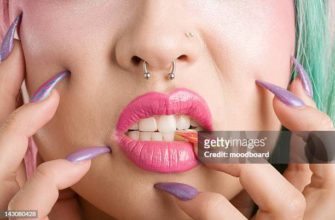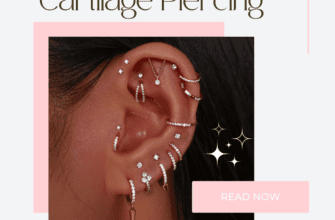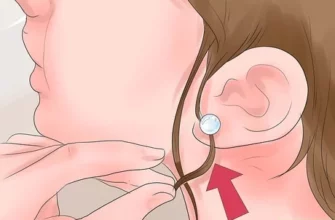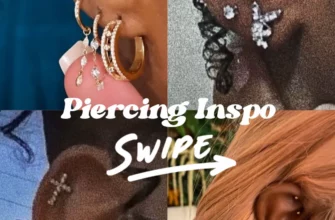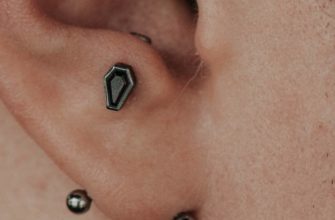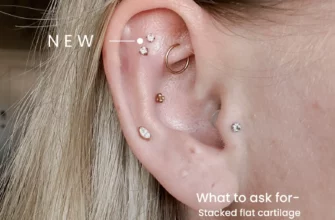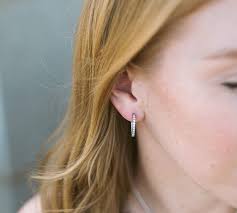Welcome to our comprehensive guide on the proper care and maintenance of your beautiful pierced cartilage and earrings!
When it comes to adorning your ears with stylish and trendy jewelry, it’s essential to know the right practices and avoid the potential pitfalls. In this guide, we will walk you through the dos and don’ts of cartilage piercing and earring care, providing you with invaluable information to keep your piercings looking and feeling fantastic.
Revolutionize Your Health & Lifestyle!
Dive into the world of Ketogenic Diet. Learn how to lose weight effectively while enjoying your meals. It's not just a diet; it's a lifestyle change.
Learn MoreWith the proper care and attention, your cartilage piercing can be a statement of personal style and self-expression.
So, what exactly do the dos and don’ts entail?
First and foremost, let’s delve into the essential dos of cartilage piercing and earring care. These are the practices that will help maintain the longevity and health of your piercings. From regular cleaning routines to avoiding certain activities, these dos will guide you towards successful and pain-free healing.
On the other hand, the don’ts highlight the activities and practices that can cause potential harm and complications. By understanding and avoiding these common mistakes, you can ensure a seamless healing process and minimize the risk of infection or damage.
So, buckle up and get ready to embark on the journey of mastering the art of caring for your cartilage piercings and earrings!
Proper Aftercare for Cartilage Piercings
Ensuring the appropriate aftercare for your cartilage piercings is crucial for their successful healing and long-term health. Following a comprehensive aftercare routine will help minimize the risk of complications and promote optimal healing. This section provides essential information and guidelines to help you properly care for your cartilage piercings.
It is essential to clean your cartilage piercings regularly to prevent infection and promote healing. Cleaning should be done using a saline solution or a mild saltwater mixture. Avoid using harsh or abrasive cleaning agents, as they can irritate the piercing and delay the healing process. Gently clean around the piercing with a clean cotton swab or pad, ensuring that you remove any debris or crust that may have formed.
In addition to regular cleaning, it is important to avoid touching your cartilage piercings with dirty hands or unnecessary contact. Touching the piercing area can introduce bacteria and increase the risk of infection. If you need to touch the piercing for any reason, make sure to wash your hands thoroughly with antibacterial soap beforehand.
During the healing process, it is crucial to avoid sleeping on the side of your cartilage piercing. This can cause pressure, irritation, and prolong the healing time. Opt for sleeping on your back or using a specialized pillow that allows for a comfortable, pressure-free position. Additionally, be mindful of any activities that may put strain on the piercing, such as participating in contact sports or wearing tight-fitting headgear.
It is important to avoid changing or removing the initial jewelry too soon. Cartilage piercings take longer to heal compared to earlobe piercings, and prematurely changing the jewelry can disrupt the healing process and lead to complications. Wait until the piercing is fully healed before considering any jewelry changes, and consult a professional piercer if you have any concerns.
In summary, proper aftercare for cartilage piercings involves regular cleaning, avoiding unnecessary contact, being mindful of sleeping positions, and refraining from changing jewelry too soon. By following these guidelines, you can ensure a successful healing process and enjoy your cartilage piercing for years to come.
Cleanse with Saline Solution
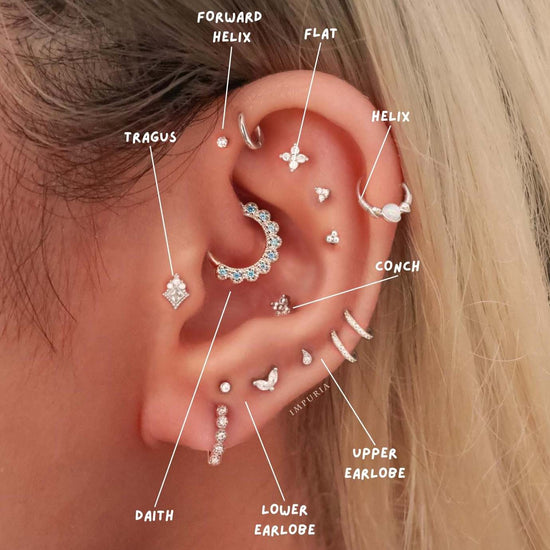
One of the essential steps for maintaining proper hygiene and promoting healing after getting a cartilage piercing or wearing earrings is to cleanse the area regularly with a saline solution. The soothing properties of this natural solution make it an ideal choice for cleaning and disinfecting without causing any irritation or dryness.
To cleanse your cartilage piercing or earrings with a saline solution, you can either purchase ready-made saline solution from a reputable piercing studio or prepare it at home using a mixture of non-iodized sea salt and distilled water. It is important to ensure that the solution is properly mixed and has the right concentration to avoid any adverse effects on the piercing or the surrounding skin.
Using a cotton pad or a sterile Q-tip soaked in the saline solution, gently clean around the pierced area or wipe the front and back of the earring. Make sure to remove any crust or debris that may have accumulated. Avoid using harsh soaps, alcohol-based solutions, or hydrogen peroxide, as these can be too abrasive and may delay the healing process.
Regularly cleansing with saline solution helps to prevent infection, reduce swelling, and promote faster healing. It is recommended to cleanse the piercing or earrings at least twice a day for the first few weeks, gradually reducing the frequency as the healing progresses. Remember to always wash your hands thoroughly before touching the piercing or earrings to avoid introducing bacteria into the area.
- Use non-iodized sea salt and distilled water to create a homemade saline solution
- Soak a cotton pad or sterile Q-tip with the saline solution
- Gently clean around the pierced area or wipe the front and back of the earring
- Ensure the solution is properly mixed and has the right concentration
- Avoid using harsh soaps, alcohol-based solutions, or hydrogen peroxide
- Cleanse the piercing or earrings at least twice a day for the first few weeks
- Gradually reduce the frequency of cleansing as the healing progresses
- Always wash your hands thoroughly before touching the piercing or earrings
By following these guidelines and cleansing your cartilage piercing or earrings with a saline solution, you can maintain proper hygiene and promote a successful healing process, ensuring long-lasting enjoyment of your piercing or earrings.
Avoid Touching or Twisting the Jewelry
One important aspect of caring for your cartilage piercing and earrings is to refrain from touching or twisting the jewelry. This practice can disrupt the healing process and increase the risk of infection.
Touching or twisting the jewelry can introduce bacteria and dirt to the piercing site, potentially leading to irritation, inflammation, or even an infection. It is crucial to avoid unnecessary contact with the jewelry to maintain optimal healing conditions.
Additionally, touching or twisting the jewelry can cause trauma to the surrounding area, leading to discomfort, prolonged healing time, or complications. The delicate nature of the cartilage tissue requires gentle treatment and avoidance of unnecessary manipulation.
To resist the temptation to touch or twist your jewelry, it is helpful to remind yourself of the potential consequences and the importance of proper healing. Furthermore, practicing good hygiene, such as regularly washing your hands before handling the jewelry, can help minimize the risk of contamination.
If you experience any discomfort or notice any signs of infection, such as prolonged redness, swelling, or pus discharge, it is essential to seek medical attention promptly. A healthcare professional can provide guidance and treatment to address any potential issues and ensure proper healing.
By avoiding touching or twisting the jewelry, you can promote the healing process and enjoy the aesthetic appeal of your cartilage piercing and earrings without complications or delays.
Avoid Sleeping on the Piercing
It is crucial to pay attention to your sleeping position and avoid putting pressure on your newly pierced cartilage. Finding a comfortable position that minimizes contact with the piercing can help promote proper healing and reduce the risk of complications.
Sleeping on your side:
Sleeping on your side can put direct pressure on the pierced area, causing irritation, redness, and even trauma to the healing cartilage. To avoid this, try using a travel pillow or a donut-shaped pillow to support your head and neck while sleeping. This can help to keep the piercing elevated and prevent any unnecessary pressure.
Sleeping on your back:
Sleeping on your back is generally the best position for minimizing contact with the piercing. However, keep in mind that other parts of your body, such as your hair or pillowcases, can still come into contact with the piercing during the night. Therefore, it is important to ensure that your hair is tied up or away from the piercing, and that you regularly change your pillowcases to maintain cleanliness.
Avoiding sleeping on the piercing is a crucial aspect of cartilage piercing care. By being mindful of your sleeping position and taking steps to minimize contact, you can support the healing process and reduce the risk of infection or complications.
Do’s for Maintaining Healthy Cartilage Piercings

Proper care and maintenance is crucial for keeping your cartilage piercings healthy and preventing any complications or infections. By following these guidelines, you can ensure that your piercings heal properly and stay in good condition.
1. Cleanse the piercing regularly: It is important to clean your cartilage piercings daily using a saline solution or a gentle, alcohol-free cleanser. This helps to remove any built-up debris or bacteria that can lead to infections. Be sure to carefully clean both the front and back of the piercing.
2. Use a saltwater soak: In addition to regular cleansing, using a saltwater soak can provide additional healing benefits to your cartilage piercing. Dissolve a small amount of non-iodized sea salt in warm water and soak your piercing for a few minutes each day. This can help reduce swelling and promote healing.
3. Be patient with the healing process: Cartilage piercings typically take longer to heal compared to earlobe piercings. It is important to be patient and avoid changing or removing the jewelry too soon. Follow the recommended healing time provided by your piercer and avoid unnecessary movement or twisting of the jewelry during the healing period.
4. Avoid touching or playing with the jewelry: Touching or playing with your cartilage piercing increases the risk of introducing bacteria to the area. It is important to avoid touching the piercing unless necessary. If you do need to touch it, ensure your hands are clean and use a gentle touch.
5. Protect the piercing during physical activities: When engaging in physical activities, such as sports or exercising, it is important to protect your cartilage piercing. Wear a clean, breathable bandage or a protective cap to prevent any accidental pulls, bumps, or injuries to the piercing site.
6. Seek professional help if necessary: If you experience any signs of infection, such as excessive redness, swelling, discharge, or prolonged pain, seek professional help immediately. A healthcare provider or a professional piercer can assess the situation and provide appropriate treatment.
By following these do’s for maintaining healthy cartilage piercings, you can ensure that your piercings heal properly and minimize the risk of complications. Remember to always consult with a professional piercer for personalized advice and adhere to their aftercare instructions.
Keep the Piercing Dry
One crucial aspect of caring for your new cartilage piercing is ensuring that it remains dry throughout the healing process. Keeping the piercing area dry helps prevent infection and promotes faster healing.
Moisture can create an ideal environment for bacteria to flourish, increasing the risk of infection. Therefore, it is important to avoid activities that may cause excessive sweating or direct contact with water, such as swimming, intense workouts, or taking long showers.
When cleaning the piercing, it is essential to carefully dry the area afterward. Gently patting it dry with a clean paper towel or cloth is recommended, as harsh rubbing can irritate the already delicate skin around the piercing. Additionally, avoid using cotton swabs or pads, as they can leave behind fibers that may get trapped in the piercing and lead to irritation.
If you accidentally get the piercing wet, ensure that you dry it thoroughly as soon as possible. Use a hairdryer on its lowest setting, held at an appropriate distance from the piercing, to gently and quickly dry the area. It is important to avoid using hot air or setting the hairdryer too close to the piercing to prevent further irritation or burns.
During the healing process, it is crucial to protect the piercing from excess moisture in other ways as well. Avoid wearing tight or non-breathable clothing that may trap sweat against the piercing, and be cautious when applying moisturizers or makeup near the piercing. These products can introduce moisture or bacteria to the area, hindering the healing process.
By keeping your cartilage piercing dry and taking necessary precautions, you can ensure a smooth healing process and reduce the risk of complications.
Wear Hypoallergenic Jewelry
Using hypoallergenic jewelry is a recommended practice for individuals who have sensitive skin or allergies to certain metals. When it comes to cartilage piercing and earring care, choosing the right type of jewelry is crucial to promote healing and prevent any adverse reactions.
Hypoallergenic jewelry refers to pieces made from materials that are less likely to cause allergies or irritations. These materials include surgical-grade stainless steel, titanium, 14-karat or higher gold, and platinum. By opting for hypoallergenic options, you can minimize the risk of experiencing discomfort, redness, swelling, or infection associated with wearing regular jewelry.
Moreover, hypoallergenic jewelry provides a safer and more comfortable alternative for those with sensitive skin. It reduces the likelihood of developing contact dermatitis, a condition characterized by an itchy, red rash that occurs when the skin comes into contact with allergens. Therefore, consider investing in high-quality hypoallergenic earrings and other accessories to ensure proper care and healing for your cartilage piercings.
To identify hypoallergenic jewelry, look for labels or markings that indicate the material used. These could include surgical stainless steel, titanium, nickel-free, or hypoallergenic. It’s important to note that even if a piece claims to be hypoallergenic, individual reactions may still occur. Therefore, always pay attention to how your body responds to new jewelry and consult a professional piercer or dermatologist if you experience any adverse effects.
| Advantages of wearing hypoallergenic jewelry: |
|---|
| 1. Reduced risk of skin allergies and irritations |
| 2. Promotes faster healing of cartilage piercings |
| 3. Minimizes the chances of developing contact dermatitis |
| 4. Provides a safer and more comfortable wearing experience |
| 5. Suitable for individuals with sensitive skin or metal allergies |
In conclusion, choosing hypoallergenic jewelry is crucial for proper cartilage piercing and earring care. By opting for high-quality materials that are less likely to cause allergies or irritations, you can ensure a safer and more comfortable experience. Be sure to pay attention to any markings or labels indicating hypoallergenic qualities and consult a professional if needed. Take care of your piercings and prioritize your skin’s health!
Follow a Strict Cleaning Routine
Maintaining proper hygiene is crucial for the health and appearance of your cartilage piercing and earrings. By adopting a strict cleaning routine, you can minimize the risk of infections, promote healing, and keep your earrings looking their best.
Consistency is key: Make it a habit to clean your piercing and earrings daily, following the recommended guidelines. Regular cleaning helps remove any dirt, bacteria, or debris that may accumulate, reducing the risk of infection.
Gentle cleaning: Use a saline solution or a mild, non-alcoholic antimicrobial cleanser to clean your piercing and earrings. Avoid harsh or abrasive solutions that could irritate the piercing or damage the earring material.
Proper technique: When cleaning your piercing, avoid rotating or moving the jewelry excessively, as this can disrupt the healing process. Gently clean the area around the piercing using a sterile cotton swab, making sure to reach all the nooks and crannies.
Patience is a virtue: Healing times can vary for cartilage piercings, so it’s important to be patient and not rush the process. During the healing period, avoid changing your earrings, swimming in pools or hot tubs, and exposing the piercing to excessive moisture or friction.
Stay away from irritants: Avoid using products such as alcohol, hydrogen peroxide, or harsh cleaning agents on your piercing, as they can disrupt the natural healing process and cause irritation. Stick to gentle cleaning solutions recommended by professionals.
It’s all about cleanliness: In addition to cleaning your piercing, regularly clean your earrings. Remove them from your earlobe or cartilage and gently clean them with a soft cloth or a specialized jewelry cleaner to remove any buildup or residue.
Monitoring for signs of infection: While following a strict cleaning routine is essential, it’s equally important to monitor your piercing for any signs of infection. If you notice symptoms such as persistent redness, swelling, excessive pain, or unusual discharge, seek professional advice immediately.
By adhering to a strict cleaning routine, you can promote the healing process, reduce the risk of complications, and ensure that your cartilage piercing and earrings remain beautiful and healthy.
Questions and answers
What is cartilage piercing and earring care?
Cartilage piercing refers to the process of puncturing the cartilage of the ear to insert jewelry. Earring care involves taking proper care and maintenance of the earrings to prevent infection and promote healing.
Can I get my cartilage pierced with a gun?
Getting your cartilage pierced with a gun is not recommended. Guns can cause excessive pressure and damage to the cartilage, increasing the risk of complications. It is advisable to have a professional piercer use a needle for cartilage piercing.
How long does it take for a cartilage piercing to heal?
The healing time for a cartilage piercing can vary greatly. On average, it takes anywhere from 3 to 12 months for a cartilage piercing to fully heal. However, individual healing times may vary depending on factors such as aftercare, jewelry type, and personal health.
What should I avoid doing while my cartilage piercing heals?
While your cartilage piercing heals, it is important to avoid sleeping on the pierced side, touching the piercing with dirty hands, swimming in pools or hot tubs, and changing the jewelry too soon. These activities can introduce bacteria and prolong the healing process.
What are some signs of an infected cartilage piercing?
Signs of an infected cartilage piercing may include excessive redness, swelling, pain, warmth around the piercing, discharge of pus, and a lingering foul smell. If you suspect an infection, it is important to seek medical attention and follow the appropriate treatment recommendations.
Is it necessary to clean a new cartilage piercing daily?
Yes, it is crucial to clean a new cartilage piercing daily to prevent infections. Use a saltwater solution or any recommended piercing cleanser to clean the area gently.
How long does it take for a cartilage piercing to heal completely?
The healing time for a cartilage piercing varies, but on average, it can take anywhere from 6 to 12 months for the piercing to heal fully. It is important to be patient and follow proper care instructions during this period.
Can I change the earring in my cartilage piercing before it is fully healed?
No, it is highly recommended not to change the earring in your cartilage piercing before it is fully healed. Changing the jewelry too early can disrupt the healing process and increase the risk of infections or complications.
What are some common signs of an infected cartilage piercing?
Some common signs of an infected cartilage piercing include redness, swelling, persistent pain, discharge of pus, and the area feeling warm to the touch. If you experience any of these symptoms, it is important to seek medical attention promptly.
How can I prevent keloids from forming on my cartilage piercing?
To prevent keloids from forming on a cartilage piercing, it is important to avoid touching or pulling on the jewelry, keep the area clean, and avoid sleeping on the piercing. If you are prone to keloid formation, consult with a professional piercer or dermatologist for additional preventive measures.



